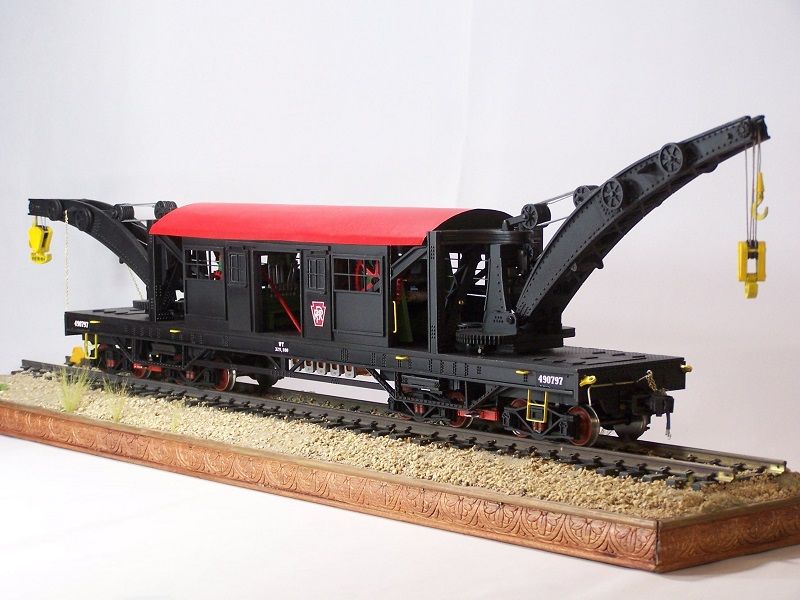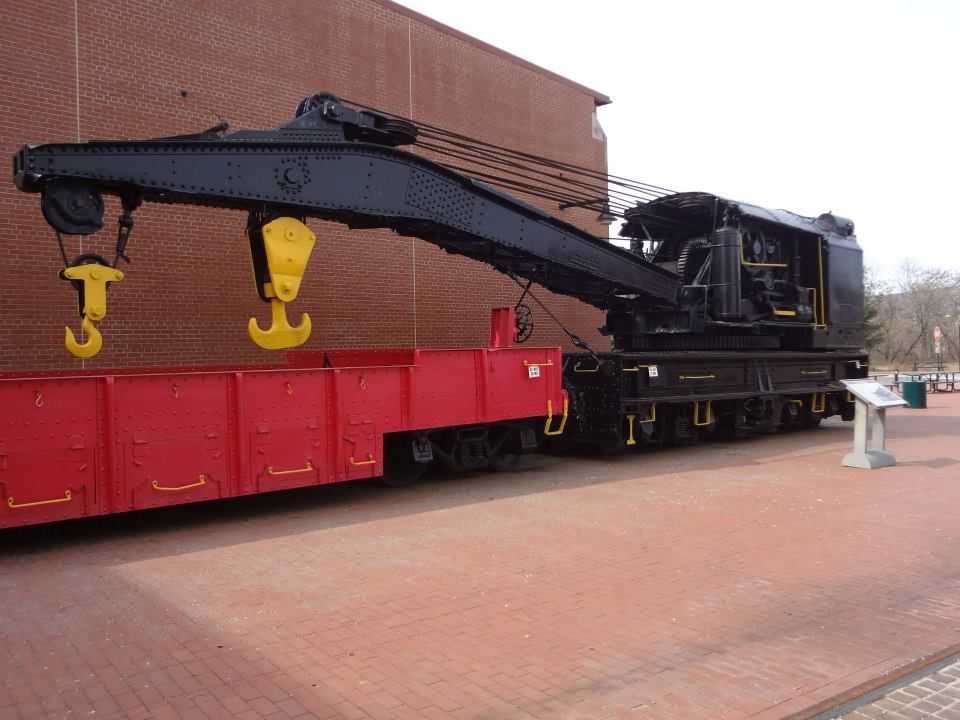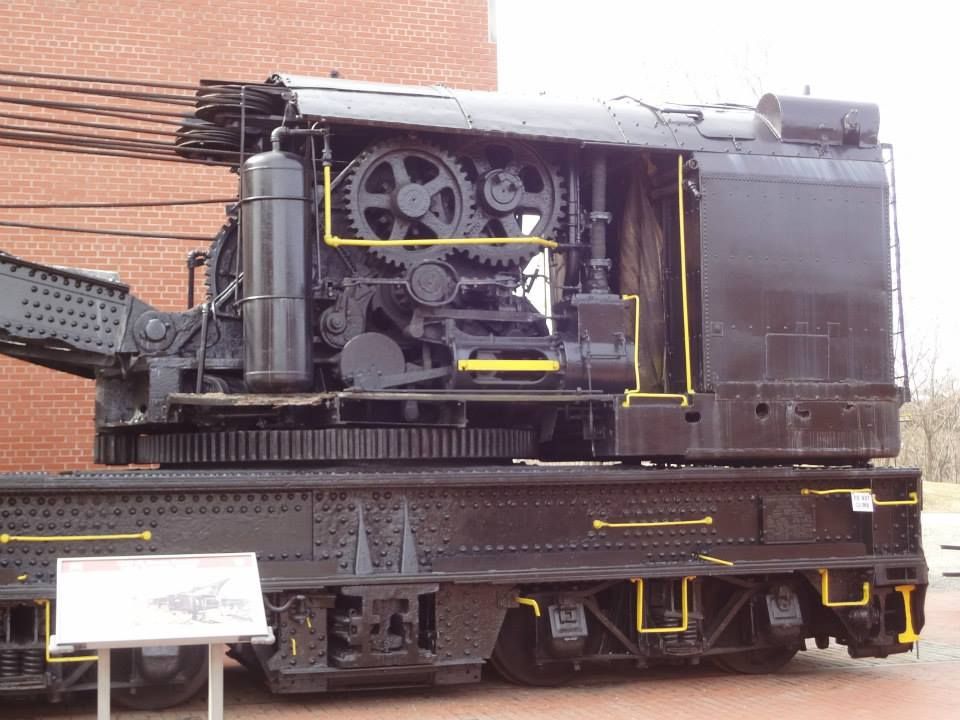Ric
After spending about an hour studying the pictures of PRR490797 I was hooked (so to speak), had to build a model.
What first fascinated me and had me thinking was, where were the winches mounted. On this crane only the booms turned so that the cable paths became the big topic of discussion in my research. Without some sort of guide system the cables would rub against the framework, in that the booms could swivel 180 degrees (90 degrees from centerline).
What I deduced from studying the few pictures available, (one standoff profile picture showed the cables coming from the cabin), was that there were a series of sheaves mounted in such a way as to keep the cables on the car centerline. Pictured is my version that contains 3 layers of horizontal sheaves mounted side by side inside the boom mount. When I assembled the design, I found that I could rotate the booms about 88 degrees before the cable hit the frame. Deduction, the sheaves that I used needed to be a bit larger diameter or mounted a little bit further toward the car center.
I am not sure how many drums were on the winches. I went with 3, the basics: Boom lift, large hook and small hook. There may have been more in that I was told that the sheaves mounted outboard on each boom (4 per boom) were actually driven capstans. How they were driven I have no idea and did not find a suitable explanation. The winch side frames also had to be fairly large again referring to the profile picture that showed the cables coming out of the cabin were at different heights, the top cable being over six feet from the car deck. This also required small sheaves within the boom itself to control the cable path up the boom.
Of course the fun part was that the 2 booms could operate independently so that meant 2 of everything.
A little insight into my design.
Alan




